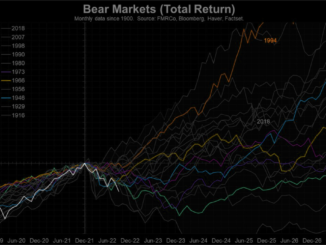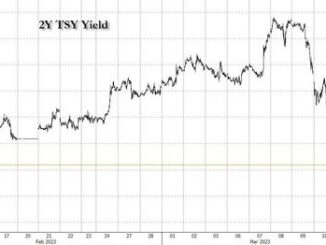
But the longer-run rate for its target rose to 2.9%, continuing the series of increases, slowly but steadily rising from the ashes of the ZIRP era.
By Wolf Richter for WOLF STREET.
FOMC members voted today to cut the Fed’s policy rates by 50 basis points, bringing to an end the 13-month plateau between the last rate hike and first cut.
A rate cut was widely telegraphed by the Fed’s communications, including by Powell in his speech at Jackson Hole last month, in the FOMC minutes of the last meeting, and by Fed governors in their speeches after the recent flurry of less than glorious labor-market data. But the size of the cut was not telegraphed.
Michelle Bowman dissented – she preferred a 25-basis-point cut.
This announcement comes after the CPI inflation report a week ago showed that “core CPI” and “core services CPI” inflation re-accelerated in August from July, the second month in a row of month-to-month acceleration. The annual “core CPI” and “core services CPI” also slightly re-accelerated, ending the series of declines. But as Powell suggested in his Jackson Hole speech, the Fed is going to “look through” a re-acceleration of CPI inflation.
The Fed cut its five policy rates:
Federal funds rate target range to 4.75% – 5.0%.
Interest it pays the banks on reserves: 4.9%.
Interest it pays on overnight Reverse Repos (ON RRPs): 4.8%.
Interest it charges on overnight Repos: 5.0%.
Primary credit rate: 5.0% (banks’ costs of borrowing at the “Discount Window”).
QT continues at the slower pace announced in May. The Fed has already shed $1.85 trillion in assets since it started QT in July 2022. Today’s announcement said it would continue to shed assets at the current pace.
The “dot plot”: an additional 50 basis points in cuts in 2024.
In the FOMC’s “Summary of Economic Projections” (SEP), which includes the “dot plot,” each of the 19 participants jots down where they see various economic metrics – the Fed’s policy rates, unemployment rates, GDP growth, and PCE inflation – by the end of 2024, by the end of 2025, etc. The median value of these projections becomes the headline projection for that metric. These projections are neither a decision nor a commitment by the Fed. And they change as the economic situation changes.
Interest rates: Today’s 50-basis point cut brought the mid-point of the Fed’s target range to 4.875%.
For the end of 2024, the median projection in today’s SEP for the federal funds rate was 4.375%, so an additional 50 basis points in cuts in 2024. For the rate at the end of 2025, the median projection declined to 3.4%
Longer-run Fed rate continues to rise: The median projection for the “longer-run” federal funds rate rose to 2.9% from 2.8% in the June SEP and from 2.6% in the March SEP, slowly but steadily rising from the ashes of the ZIRP era.
Here is how the 19 participants saw the rate scenario for the rest of 2024, with two meetings remaining (November and December):
2 see 4.875%: No additional cuts7 see 4.625%: 25 basis points in cuts (1 cut)9 see 4.375%: 50 basis points in cuts1 sees 4.125%: 75 basis points in cuts
GDP growth: The median projection for real GDP growth for 2024 was lowered to +2.0%, from 2.1% in the June SEP. For 2025 and 2026, it remained at 2.0% (which is the 10-year average real GDP growth of the US).
Inflation rate: The median projection for “core PCE” inflation by the end of 2024 declined to +2.6%, up from 2.8% in the June SEP. For 2025, it was at 2.3%.
Unemployment rate: The median projection for the unemployment rate rose to 4.4% by the end of 2024, up from 4.0% in the June SEP. For 2025, the median projection was also 4.4%.
What changed in the statement:
The statement changed in many ways to indicate that inflation is getting closer to the goal and that the labor market is now top priority.
New: “Job gains have slowed…”
Old: “Job gains have moderated…”
But left intact: “…and the unemployment rate has moved up but remains low.”
New: “Inflation has made further progress toward the Committee’s 2 percent objective but remains somewhat elevated…”
Old: “Inflation has eased over the past year but remains somewhat elevated. In recent months, there has been some further progress toward the Committee’s 2 percent inflation objective.”
New: “The Committee has gained greater confidence that inflation is moving sustainably toward 2 percent, and judges that the risks to achieving its employment and inflation goals are roughly in balance…”
Old: “The Committee judges that the risks to achieving its employment and inflation goals continue to move into better balance.”
New: “In light of the progress on inflation and the balance of risks, the Committee decided to lower the target range for the federal funds rate by 1/2 percentage point to 4-3/4 to 5 percent.”
Old: “In support of its goals, the Committee decided to maintain the target range for the federal funds rate at 5-1/4 to 5-1/2 percent.”
New: “In considering additional adjustments to the target range…”
Old: “In considering any adjustments to the target range…”
Here is the whole statement:
Recent indicators suggest that economic activity has continued to expand at a solid pace. Job gains have slowed, and the unemployment rate has moved up but remains low. Inflation has made further progress toward the Committee’s 2 percent objective but remains somewhat elevated.
The Committee seeks to achieve maximum employment and inflation at the rate of 2 percent over the longer run. The Committee has gained greater confidence that inflation is moving sustainably toward 2 percent, and judges that the risks to achieving its employment and inflation goals are roughly in balance. The economic outlook is uncertain, and the Committee is attentive to the risks to both sides of its dual mandate.
In light of the progress on inflation and the balance of risks, the Committee decided to lower the target range for the federal funds rate by 1/2 percentage point to 4-3/4 to 5 percent. In considering additional adjustments to the target range for the federal funds rate, the Committee will carefully assess incoming data, the evolving outlook, and the balance of risks. The Committee will continue reducing its holdings of Treasury securities and agency debt and agency mortgage‑backed securities. The Committee is strongly committed to supporting maximum employment and returning inflation to its 2 percent objective.
In assessing the appropriate stance of monetary policy, the Committee will continue to monitor the implications of incoming information for the economic outlook. The Committee would be prepared to adjust the stance of monetary policy as appropriate if risks emerge that could impede the attainment of the Committee’s goals. The Committee’s assessments will take into account a wide range of information, including readings on labor market conditions, inflation pressures and inflation expectations, and financial and international developments.
Voting for the monetary policy action were Jerome H. Powell, Chair; John C. Williams, Vice Chair; Thomas I. Barkin; Michael S. Barr; Raphael W. Bostic; Lisa D. Cook; Mary C. Daly; Beth M. Hammack; Philip N. Jefferson; Adriana D. Kugler; and Christopher J. Waller. Voting against this action was Michelle W. Bowman, who preferred to lower the target range for the federal funds rate by 1/4 percentage point at this meeting.
Take the Survey at https://survey.energynewsbeat.com/





